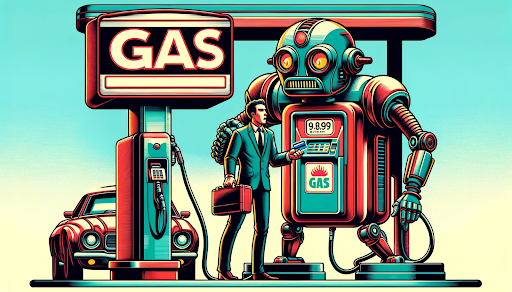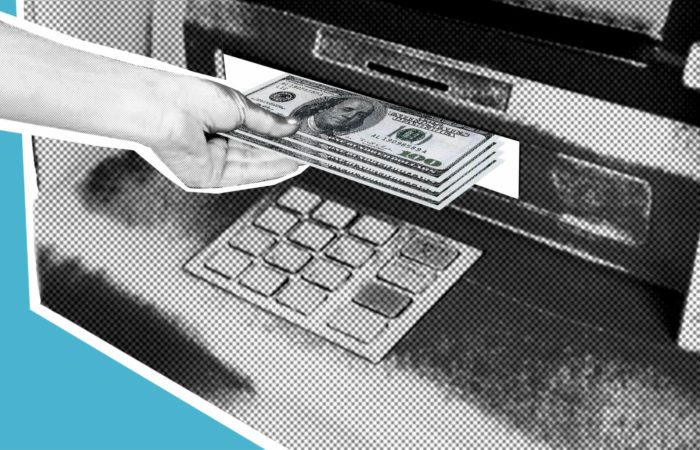Editor’s Note: Overdraft Apps provides detailed product reviews and recommendations based upon extensive research and our own hands-on testing. We may earn a referral fee when you sign up for or purchase products mentioned in this article.
Need cash quickly, even though you have insufficient funds in your checking account? If you have overdraft protection, you may be able to withdraw funds from an ATM, subject to your debit card overdraft limit. In this article, find out more about using your debit card when you have no money and also how overdraft protection works generally.
Can I still use my debit card if my account is overdrawn?
Whether or not you can continue to use your debit card when your checking account is overdrawn depends on what arrangements you have in place with your bank.
If you have overdraft protection and you’ve told your bank to authorize and pay overdrafts for everyday debit card and ATM transactions, you may be able to continue overdrawing at your bank’s discretion.
Your overdraft limit for debit card transactions will depend on your bank’s overdraft practices and your credit history. If you overdraw your checking account regularly, your bank may only allow a small overdraft limit.
If you’ve been approved for an overdraft line of credit, your limit could be anywhere between $500 to $10,000 depending on your bank.
More on How to overdraft a debit card on purpose
How does overdraft protection work?
Overdraft protection is an add-on product that you can set up with your bank so that you can avoid payment rejection charges if you overdraw. There are a few different types to consider:
- Overdraft coverage – typically you’ll be able to go overdrawn (although that isn’t always guaranteed), but you’ll have to pay a fee every time. Even if you go overdrawn by just a few dollars, you could be charged around $35 on top. At times, this could make overdrawing annoyingly expensive. Most banks won’t impose a fee if you bring your balance positive by close of business the same day.
- Linked account overdraft protection – this is where you have overdraft protection in the form of a linked account, e.g. a savings account. When you overdraw, the funds are taken from your other account to cover your overdraft. Transfer fees usually apply, but these are generally lower than those associated with traditional overdraft protection. Capital One offers free savings transfers as one of their overdraft coverage options on their 360 online checking account.
- Overdraft line of credit – this is a revolving line of credit attached to your bank account to cover your overdrafts automatically. The fees work differently with this type of overdraft protection product – you’ll get charged interest on your outstanding balance, for as long as you borrow funds, rather than a fee each time. Annual fees may also apply.
More on How does overdraft protection work
Banks that let you overdraft at ATM
Not all banks allow you to overdraw at an ATM if you have insufficient funds in your account. Here are a few that will:
- Bank of America – this bank may let you overdraw at one of their ATMs for specific ATM withdrawals. A $35 fee applies each time, and they’ll inform you at the ATM whether this service is available to you. Learn more here.
- Citizen’s Bank – if you enrol in their Debit Card Overdraft Coverage, you can overdraw at an ATM at the bank’s discretion; an overdraft fee will apply each time.
- Prosperity Bank – You’ll have to opt-in to authorize Prosperity Bank to pay overdrafts on ATM transactions, see more details on their Advantage Overdraft product here.
More on ATMs that let you overdraft
Know your bank’s overdraft practices
To avoid any problems with overdraft fees or payment rejections, you should take a few minutes to check with your bank to confirm what type of overdraft protection you have set up on your checking account (if any) and whether it meets your needs.
Ask about your debit card overdraft limit and whether your bank will allow you to overdraw at an ATM if you need to.
Bear in mind that it’s best not to overdraw too frequently. Overdraft protection can be helpful for enabling the odd transaction to go through when you have insufficient funds, but relying on overdrawing can cause you financial headaches in the long run.
*Disclaimer: the facts and figures stated in this article are correct at the time of publishing.
WAIT! Why borrow quick cash when you can earn it?!
Cash advance apps can be a great tool for getting a little extra cash when you need it, but you’ll need to repay it – plus fees – wihtin a week or two. Did you know there’s an easy way to earn extra cash that’s yours to keep?

KashKick is a wildly popular service that lets you earn money for playing games, completing surveys, signing up for trial offers and more. (You’ll even earn cash for just completing your profile!) You can earn cash today and withdraw your earnings through PayPal once you’ve reached $10. You can earn over $100/month with KashKick – and you don’t need to spend a dime or take out your credit card to do it.
There are dozens of high-paying offers available on KashKick, and if you’re into playing new games on your phone, you can earn some serious cash for doing what you love. Though offers change regularly, there are currently1 more than three dozen offers available where you can earn cash – sometimes over $100 – just by downloading and playing popular games like Coin Master, Monoply Go, Bingo Blitz, and more. These games are all free to download, and no in-app purchases are required to earn with KashKick.
Get paid to play on your phone >>> Check out KashKick
- Cleo App Review – $250 Cash Advances and Wiseass AI Money Management - April 24, 2024
- FloatMe Review – Simple $50 Cash Advances with Low Fees - April 17, 2024
- MoneyLion App Review: Save, Invest & Borrow up to $1,000 in One Simple App - April 15, 2024
- As of February 13, 2024. Offers may change and may not be available to all users. Eligibity requirements apply. See KashKick's Terms of Service for full details.



